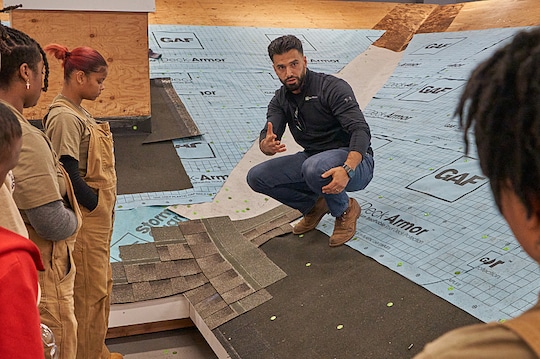
Workplace conflict can arise across many working environments and can lead to unmotivated staff and poor working relationships, both on and off the roof. The right de-escalation techniques can help defuse situations as well as foster more cohesive working relationships going forward.
What Causes Workplace Conflict?
Because everyone comes to work with their own thoughts, ideas, and values, workplace conflict is natural—it happens when employees disagree or experience tension in their relationships due to some sort of misalignment, either real or perceived.
That may look like:
- Leadership conflict, such as when managers and employees fail to see eye-to-eye or disagree on a performance assessment.
- Interdependency-based conflict stemming from a lack of cooperation between employees who rely on each other's work in order to complete their own.
- Conflict stemming from differences in work styles, such as a team-oriented employee interacting with an independent employee.
- Personality clashes, such as introverts and extroverts not aligning.
- Cultural-based conflict, such as a lack of sensitivity to different practices or values.
How Should Teams Approach Workplace Conflict?
Often, the outcome of a conflict hinges more on how it's addressed than on the topic of the conflict itself. When conflicts do arise, arm yourself with practical de-escalation techniques:
1. Address the Conflict
Conflict isn't always a bad thing; not addressing it is. Sweeping situations under the rug often just exacerbates issues. Instead, help teams understand that healthy tensions can lead to new understandings and productivity that will help move the business forward.
Pinpoint healthier ways of approaching tense situations, such as taking a beat to think before responding, practicing compassionate listening, and breathing to remain calm.
2. Communicate
How you communicate as you de-escalate conflicts sets the tone for their resolution. Listen and ask questions, letting each team member share their viewpoint without interrupting or offering an opinion. When everyone gets their share of the discussion, team members are more likely to keep their cool and have a productive dialogue.
If you are directly involved in the conflict, try to remain open to new perspectives. Resist the urge to blame others and defend your position at the expense of hearing the other side. Be honest, but share your feelings respectfully as you reach an understanding.
3. Put Safety First
Talking it out in the moment doesn't always work. When tempers flare, you may need to take a pause and give everyone involved time to cool down. Follow the OODA model: observe the situation, orient yourself and others, decide what kind of conflict you're seeing, and act accordingly.
Consider scheduling a time for the parties involved to sit down with an unbiased third party, such as a human resources director, who can provide a safe environment to work through the situation.
Eliminating conflicts is nearly impossible, but fostering a workplace culture of compassion and empathy is not. When employees feel comfortable expressing concerns, teams can proactively address potential points of conflict—opening the door to faster innovation, higher retention, and stronger working relationships. Resolving conflict swiftly and with empathy helps everyone — at every role — do their best.



